March 2, 2017 Auroras
Wabana Lake, Chippewa National Forest
A high speed stream of solar wind struck during the day, and solar wind conditions had been a bit better at that time with stronger magnetic fields. The magnetic fields usually weaken when the main solar wind stream arrives, and this often causes the auroras to retreat northward, but the high wind speeds keep things active. I went out to shoot but initially found a pretty dark northern horizon that was only tinted green. This was pretty disappointing, but the winter season has very few dramatic aurora displays, so I had gotten used to it at this point of the year.
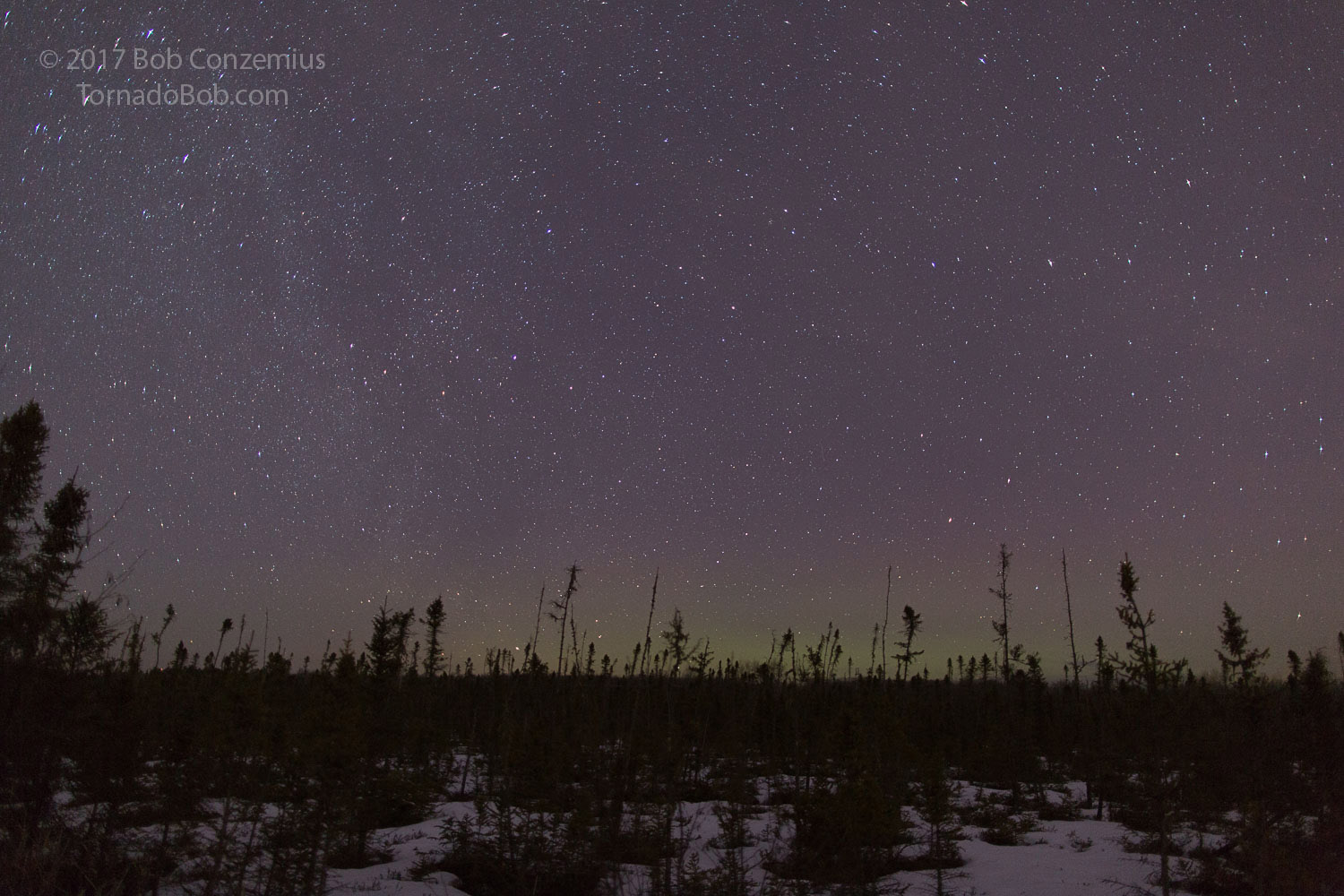 |
| When I first saw the sky, it was barely tinted green on the northern horizon. |
I went back to the car and texted out a rather pessimistic forecast for the rest of the evening, noting also the waning solar cycle, the decreasing strength of the next solar cycle, and the geomagnetic pole movement away from Minnesota, which made long term prospects for aurora viewing increasingly dim. As I was in the middle of this morose diatribe, someone on the Great Lakes Aurora Hunters group on Facebook posted that the Churchill webcam images had just exploded with auroras. Churchill is 800 miles away and almost directly north. That is about the limit of horizon visibility for auroras for my location, so I quickly hopped out of the car to see what there was. Indeed, some brighter auroras had appeared on the horizon.
 |
| When the Churchill aurora cam "exploded", this is what I saw. |
This was nice to see, but the black spruce in my foreground, even though they are rather short trees, blocked my view of the aurora. I figured it was pretty nice to see the stars with the clear sky we had, and the moon would be setting soon, so I decided to head a little farther north to a shooting location with a better view of the northern horizon.
I made it to Wabana lake and walked out past the small peninsula next to the boat landing I use. The auroras were still pretty close to the horizon, but columns were appearing and getting a little more visible. I shot these for a while, but they went away, replaced by a green glow with pulsating blobs of aurora.
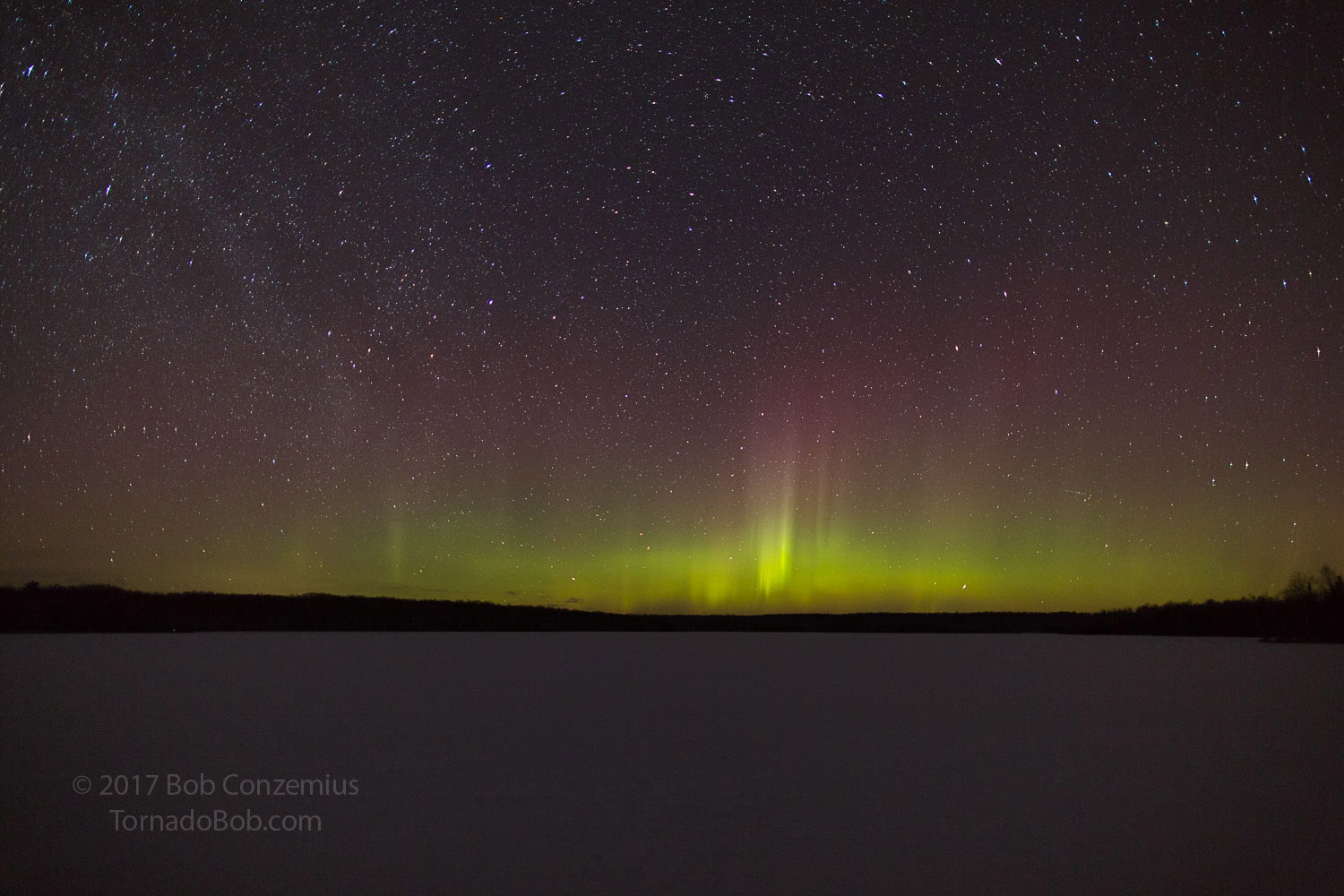 |
| Going out to a larger lake helped me see the horizon better. |
The pulsating area grew southward and eventually formed into an auroral arc about seven degrees above the horizon. A brightening then developed at the horizon and built southward to form a second arc to the north of first one.
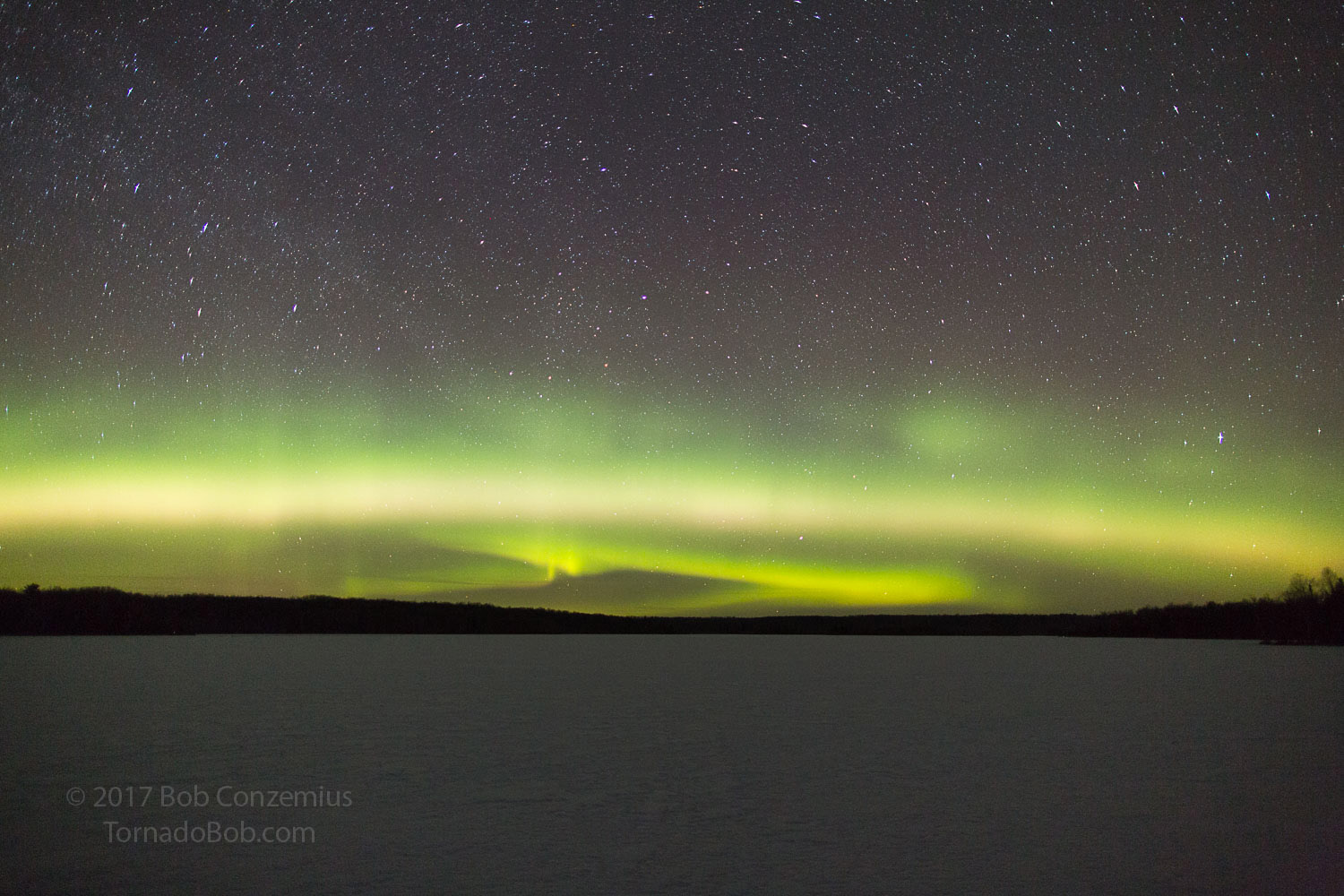 |
| But then the auroras helped out, too, by expanding southward. |
The closer arc broke up into pulsating blob auroras with a nice nitrogen lower fringe while the northern arc began to dance around and form a few pillars. Soon, there were waves of rapid pulsations moving through a sea of auroral blobs.
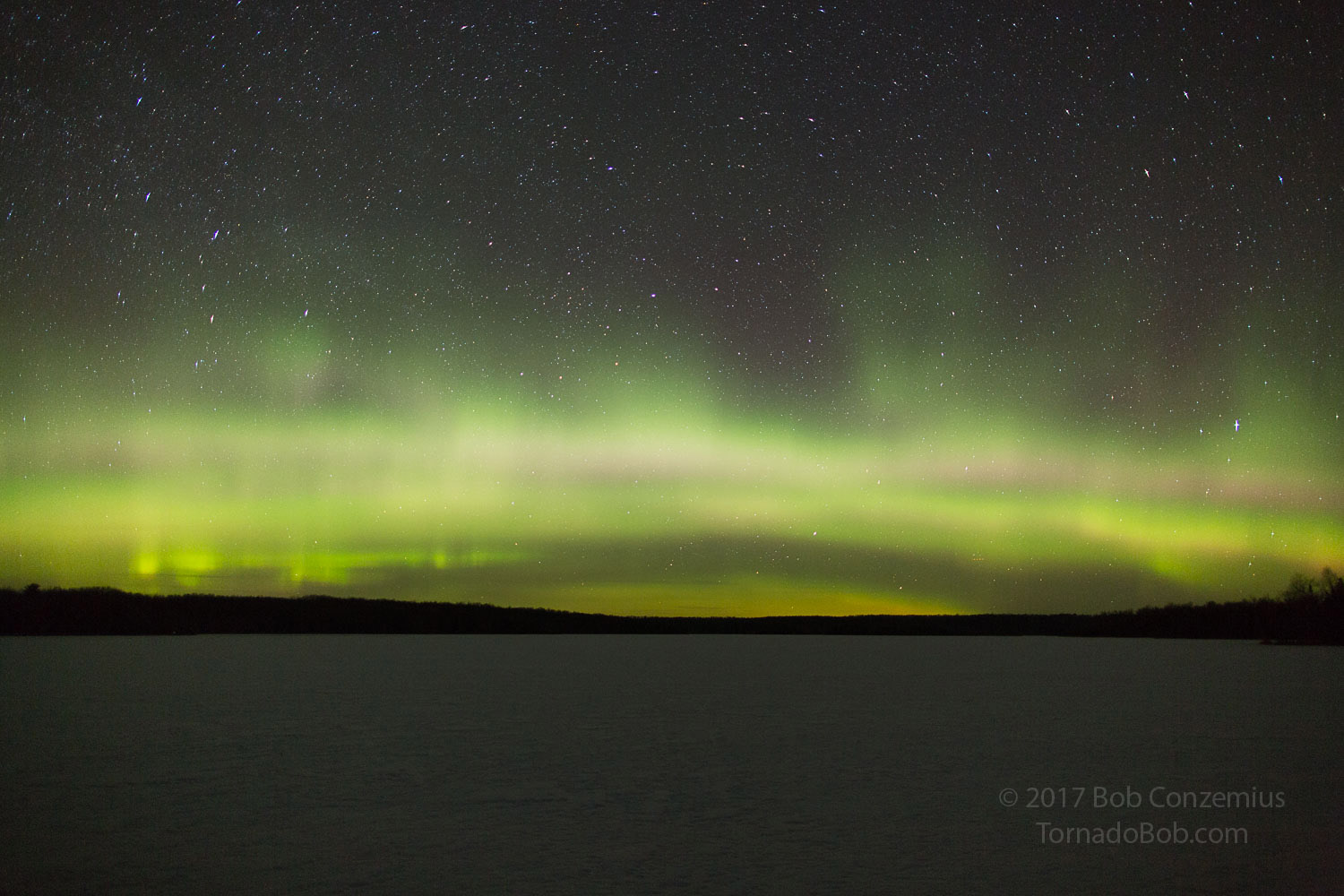 |
| The auroras spread over the sky. The ones closer to the horizon moved laterally, and the closer ones pulsed. |
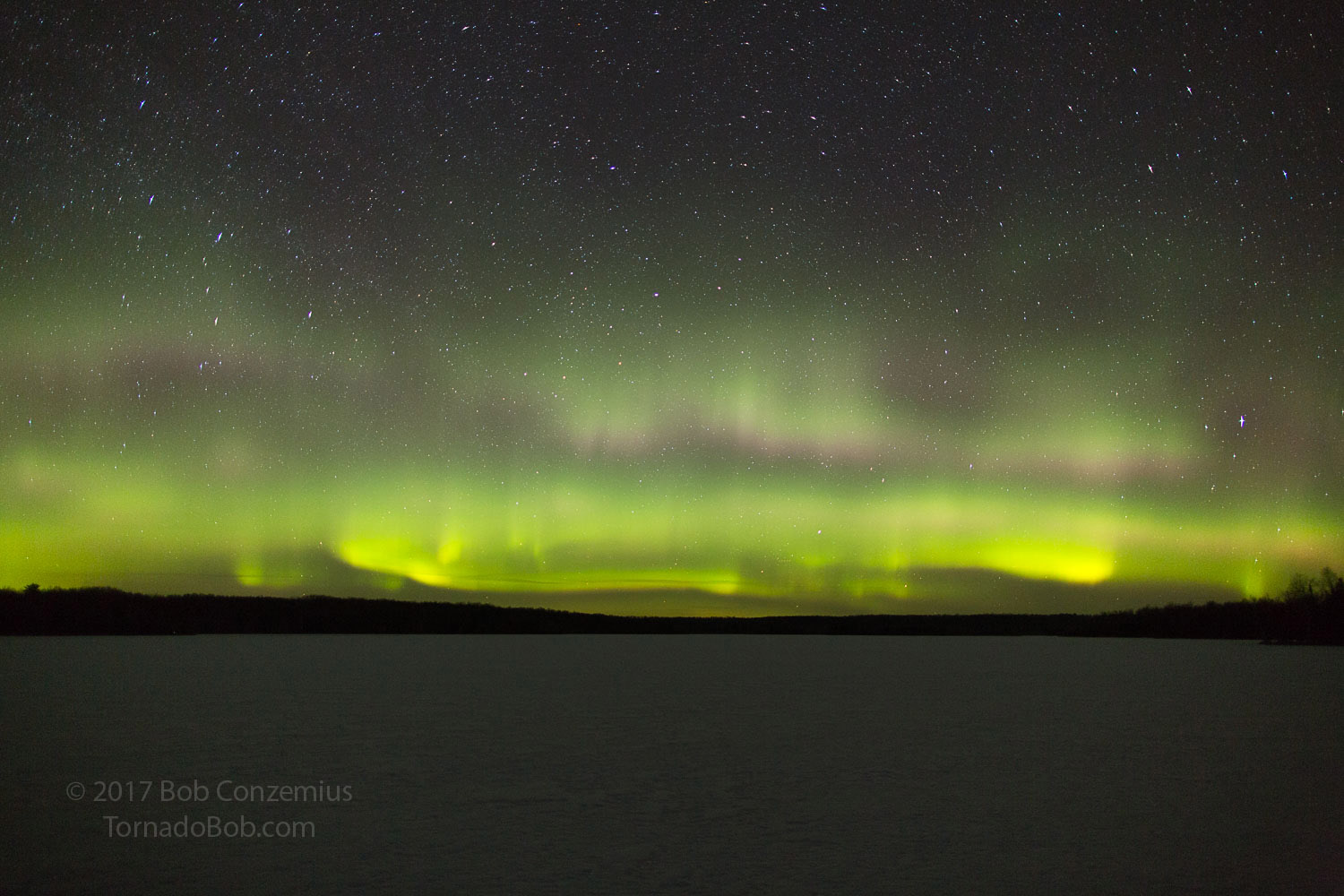 |
| Spreading farther. |
 |
| Probably the maximum extent. |
I brought out my other camera to shoot stills while I did a timelapse with my primary camera. This attempt was unsuccessful because I did not have a second tripod. I made some attempts to place the second camera directly on the ice, and I borrowed a couple pieces of wood from the shoreline, but the pictures did not turn out very well. In the meantime, the auroras started retreating toward the northern horizon, and the pulsations diminished. At 1:00 AM, I decided it was time to head back home.
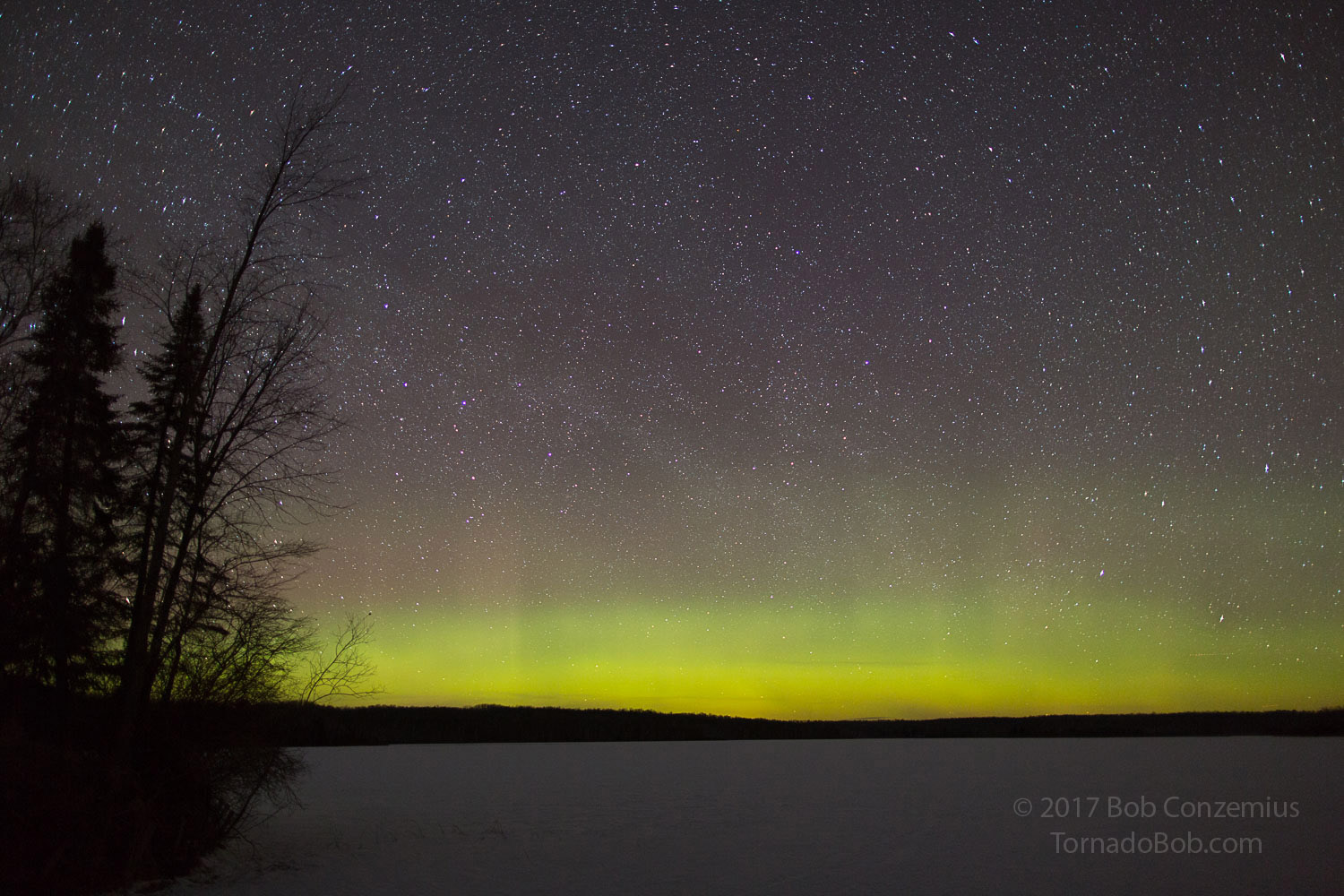 |
| I finally decided to put something in the foreground. |
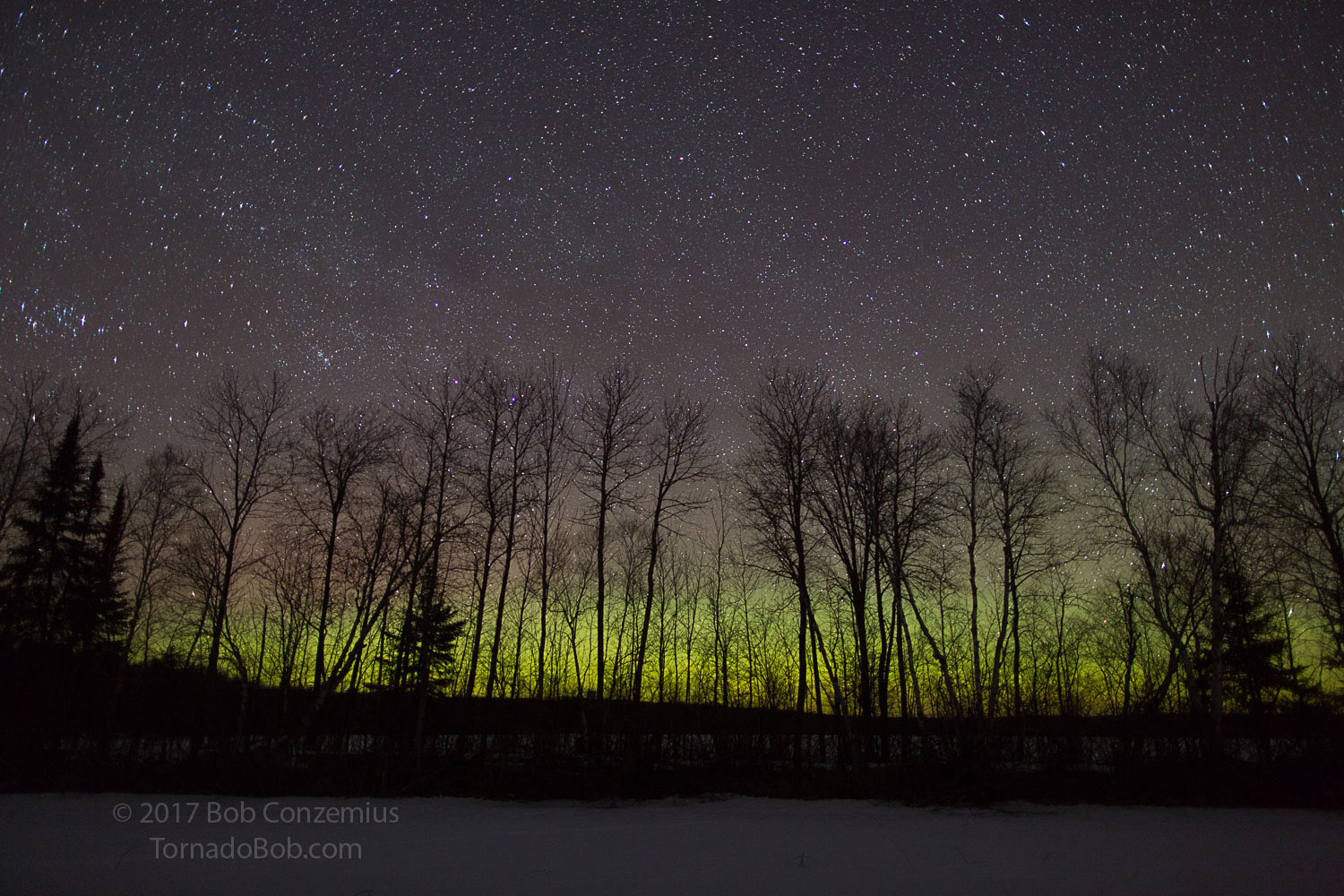 |
| Trees silhouetted against the retreating aurora. |
As the road winds back into town, it circles around McKinney Lake, which affords a final good view to the north before I fully enter town. As I passed the lake, I could see the auroral oval was again rebuilding, a harbinger of another explosion of auroras. I stopped at the boat landing on McKinney Lake, on the north edge of town, and snapped a few more pictures. I did not change my camera settings for this new location, choosing to leave them where they were when I took my last shot (see above). I was amazed at the relative lack of contrast when shooting from town. Even though almost all the lights were behind me, the scattering of this light in the low concentration of aerosols above me brightened the sky quite a bit. I could stop down at least a full stop but decided to show the effects of the light on the photography.
I snapped a few pictures but could not stay for the next show. I needed sleep to avoid a resurgence of the illness I had earlier in the week, but I was also now unmotivated to shoot from an in-town location where the contrast was relatively poor. The auroras would brighten again as I slept.
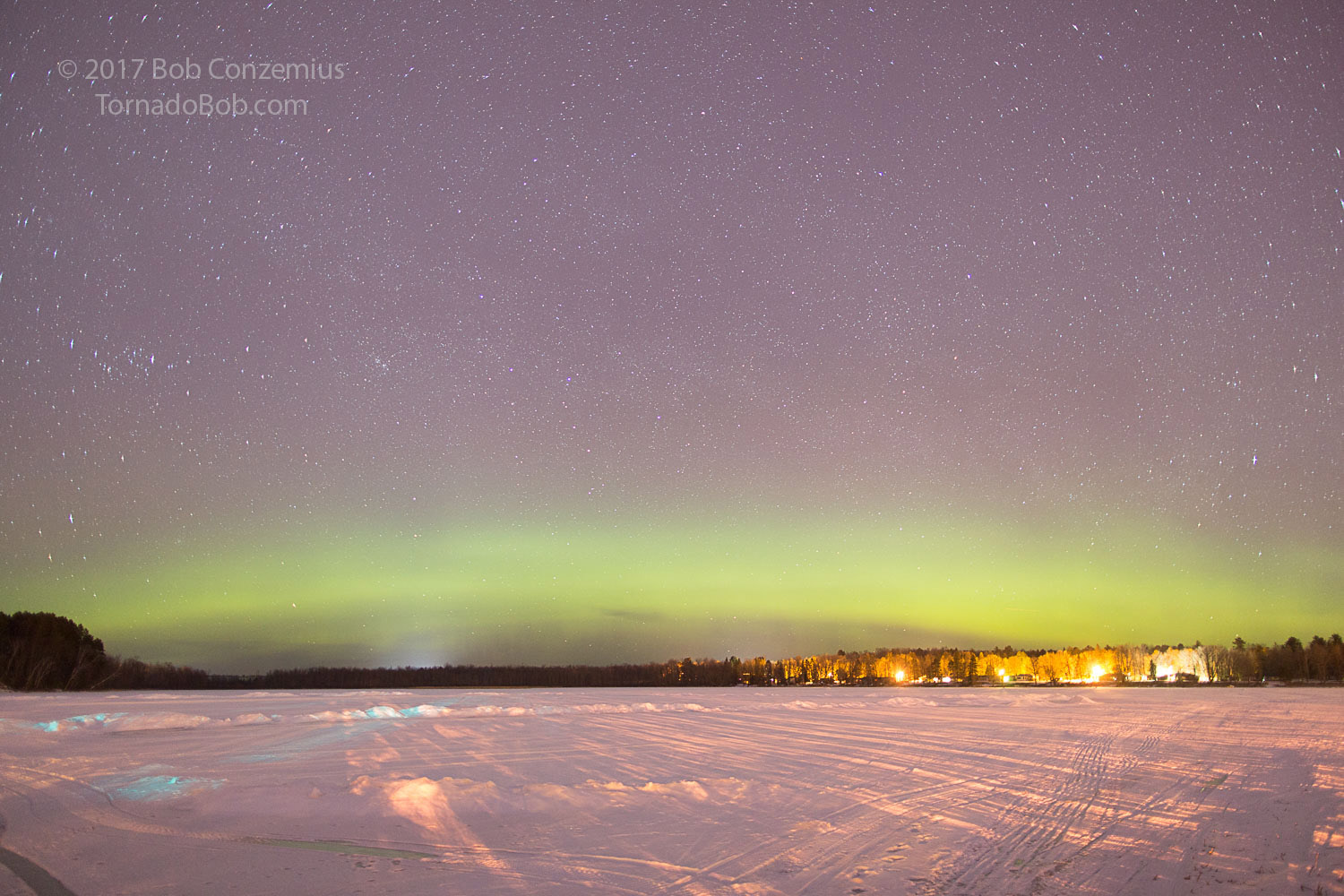 |
This image is taken with the exact same settings as the previous image. This is what city lights do to aurora photography.
|
Back to Auroras | Home